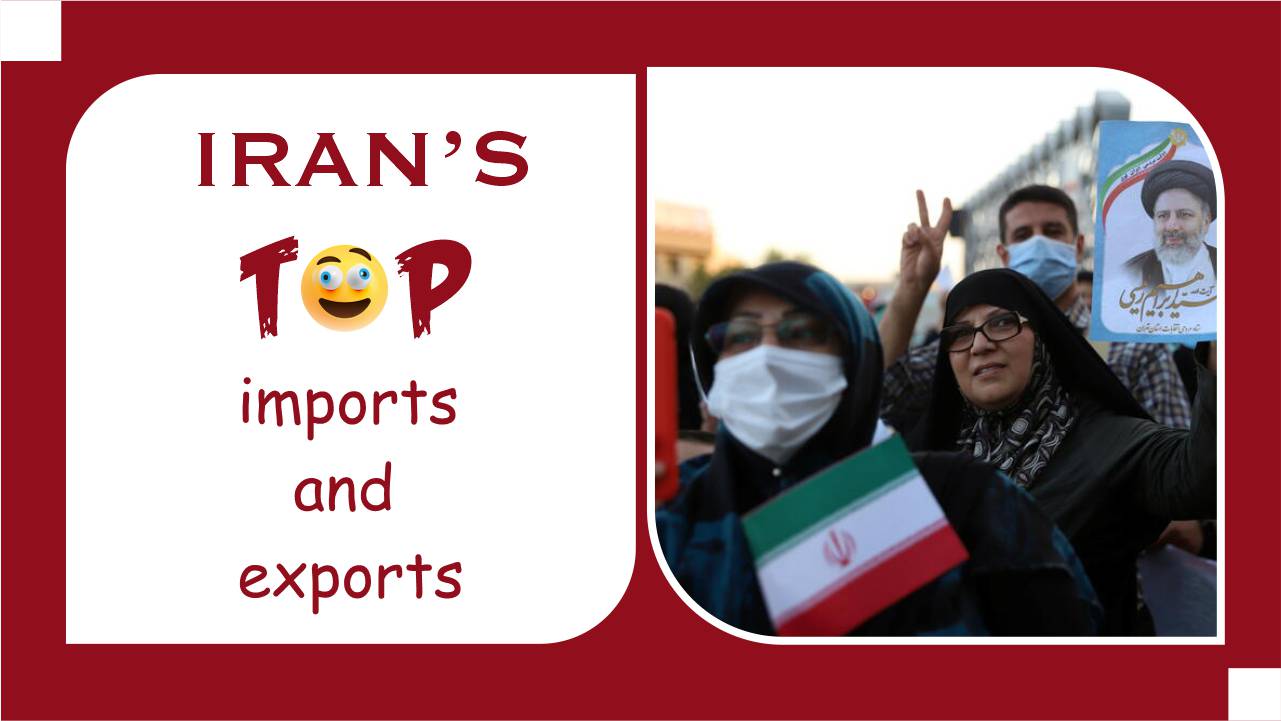In 2021, Iran's imports were predicted to be worth 22.2 billion dollars. That figure represents a minus 48 percent loss from 2016 to 2020 and a minus 36.9 percent drop from 2020 to 2021.
Iran is officially known as the Islamic Republic of Iran, although the Middle Eastern country was once known as Persia.
Food accounts for three of Iran's top five most valuable imported items.
The top five products imported into Iran which are corn, rice, vehicle components or accessories, soyabeans, and phone system devices including smartphones account for 16 percent of Iran's overall import spending.
According to 2020 data, China had 24.9 percent, the United Arab Emirates with 13.8 percent, India with 6.4 percent, Turkey with 6.3 percent, Germany with 5.9 percent, Switzerland got 5.1 percent, South Korea with 5 percent, Russia with 3.3 percent, Italy with 2.8 percent, and the United Kingdom with 2.8 percent were Iran's top suppliers, accounting for about three-quarters representing 76.1 percent of its international purchases.
From a continental viewpoint, Asian countries accounted for about two-thirds of 65.4 percent of Iran's total imports by value in 2021.
31.3 percent of import purchases came from European trade partners.
Latin America with 1.9 percent excluding Mexico but including the Caribbean, North America got 0.5 percent, Oceania had 0.4 percent excluding Australia and New Zealand, and Africa got 0.4 percent.
Given Iran's population of 84.1 million people, the country's total 22.2 billion dollars in 2020 imports equates to nearly 270 dollars in annual product demand for each Iranian.
Iran's Top Imports
In terms of dollar value, the following product groupings account for the majority of Iran's import imports in 2020.
The percentage share of each product category in terms of total imports into Iran is also indicated.
Machinery including computers: 3.4 billion dollars accounts for 15.5 percent of total imports
Cereals: with 2.4 billion dollars account for 10.7 percent
Electrical machinery, and equipment: 1.9 billion dollars accounts for 8.4 percent
Optical, technical, and medical apparatus: 1.1 billion dollars account for 4.8 percent
Vehicles: 996.1 million dollars accounts for 4.5 percent
Organic chemicals: 827.2 million dollars accounts for 3.7 percent
Pharmaceuticals: 814.9 million dollars account for 3.7 percent too.
Oil seeds: with 750.8 million dollars stand at 3.4 percent
Plastics, plastic articles: 654.5 million dollars account for 2.9 percent
Articles of iron or steel: stand at 462.3 million accounting for 2.1 percent
Iran's top ten imports, in terms of value, accounted for 59.7 percent of the total value of its product purchases from foreign nations.
Plastic materials and goods derived from plastics went down by minus 40.9 percent and organic chemicals were the two most rapidly falling product categories among Iran's top ten imports year over year also came down by minus 38.5 percent.
Iran's Top Exports
The Islamic Republic of Iran, which shares eastern borders with Pakistan and Afghanistan, exported an estimated 11.8 billion dollars worth of commodities around the world in 2021.
This figure represents a minus 85 percent loss from 2016 to 2020 and a minus 61.7 percent drop from 2019 to 2021.
Ethylene polymers, crude oil, acyclic alcohols, various nuts, and semi-finished iron or non-alloy steel goods are Iran's most important exports.
Those five primary products account for more than half which stands at 52 percent of all Iranian exports in terms of monetary value.
According to the most recent available country-specific data from 2018, importers in China had 14.7 percent of the global total, Iraq with 14.3 percent, the United Arab Emirates with 9.5 percent, Afghanistan with 4.7 percent, South Korea with 4.1 percent, Turkey with 3.8 percent, India with 3.3 percent, Pakistan with 2 percent, Indonesia with 1.3 percent, Oman with 1.2 percent, Thailand with 1.1 percent, and Azerbaijan with 1.1 percent purchased 60.5 percent of Iran's exports.
Given Iran's population of 84.1 million people, the country's total 11.8 billion dollars in 2020 exports equates to nearly 140 dollars for each Iranian citizen.
In terms of monetary value, the following export product groups will account for the majority of Iranian global shipments in 2020.
The percentage proportion of each export category in terms of total Iranian exports is also indicated.
Plastics, plastic articles: 2.6 billion dollars account for 22.4 percent of total exports
Mineral fuels including oil: with 1.9 billion dollars account for 16.3 percent
Organic chemicals: 1.3 billion stands at 11 percent
Fruits, nuts: 1.3 billion dollars account for 10.6 percent
Iron, steel: 906.9 million dollars stands at 7.7 percent
Copper: 332.6 million accounts for 2.8 percent
Ores, slag, ash: with 312.9 million dollars stands at 2.7 percent
Salt, sulphur, stone, cement: 258.7 million dollars account for 2.2 percent
Fertilizers: with 247.1 million dollars account for 2.1 percent
Zinc: 142 million dollars accounts for 1.2 percent
The top ten exports from Iran accounted for 79 percent of the total value of its global shipments.
Fruits and nuts were the only one of the top ten export categories to increase by 11.7 percent from 2020 to 2021.
Mineral fuels, including oil, were the worst loser among Iran's top 10 export categories, with a minus 89 percent reduction year over year.
In macroeconomic terms, Iran's total exported exports account for 1% of the country's entire Gross Domestic Product valued at 1.149 trillion dollars in Purchasing Power Parity US dollars in 2021.
In PPP terms, exports will account for 1 percent of overall GDP in 2020, compared to 1.8 percent in 2020.
Those percentages, however, based on a short timescale, show that Iran's entire economic performance is becoming less reliant on products sold on overseas markets.
The unemployment rate is another important measure of a country's economic performance.
In 2020, Iran's average jobless rate was 10.823 percent.
According to the International Monetary Fund, this is up from an average of 10.65 percent a year ago.
Tehran is Iran's capital city.
SOURCES:
https://www.worldstopexports.com/irans-top-10-imports/
https://www.worldstopexports.com/irans-top-10-exports/
